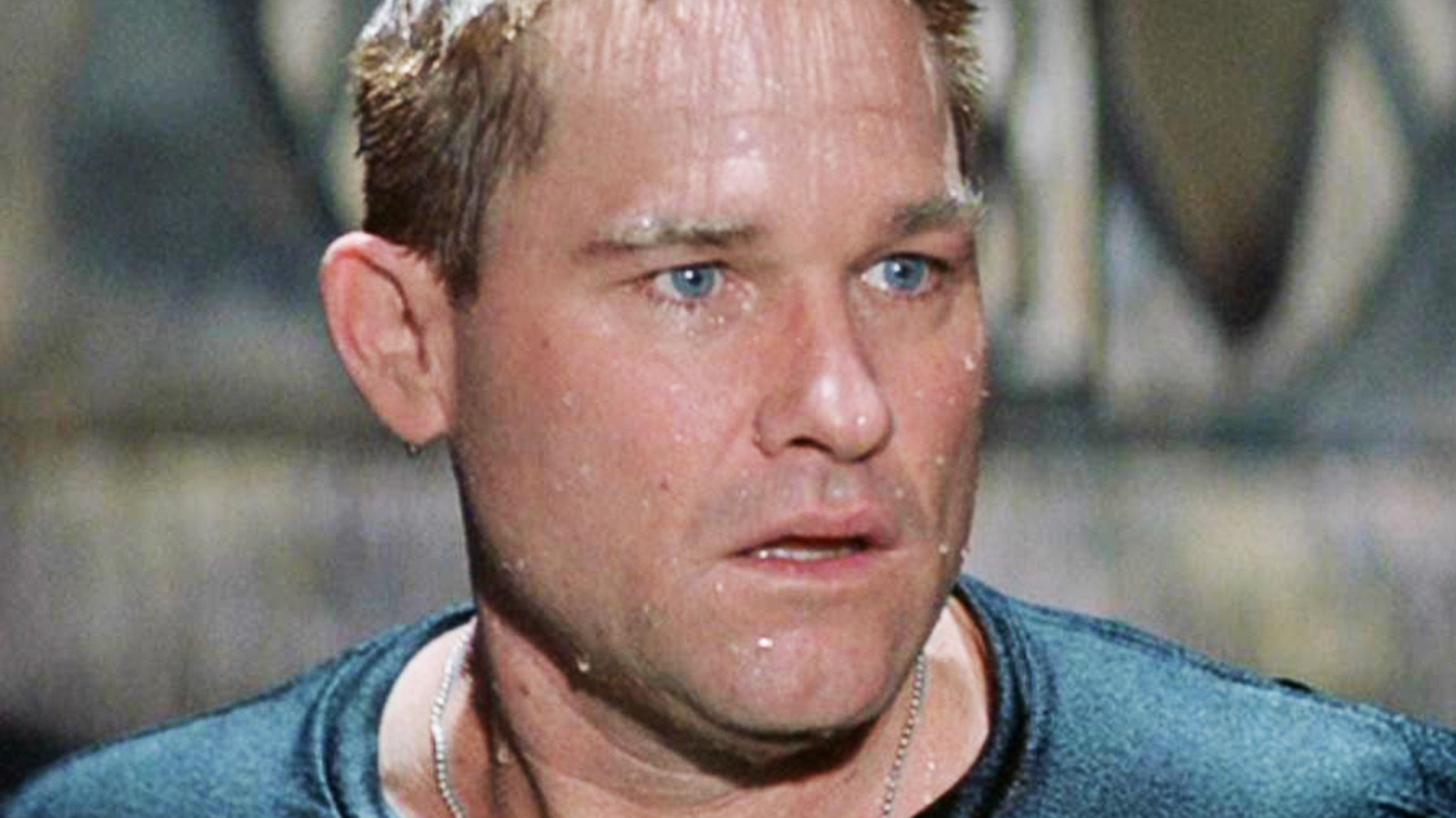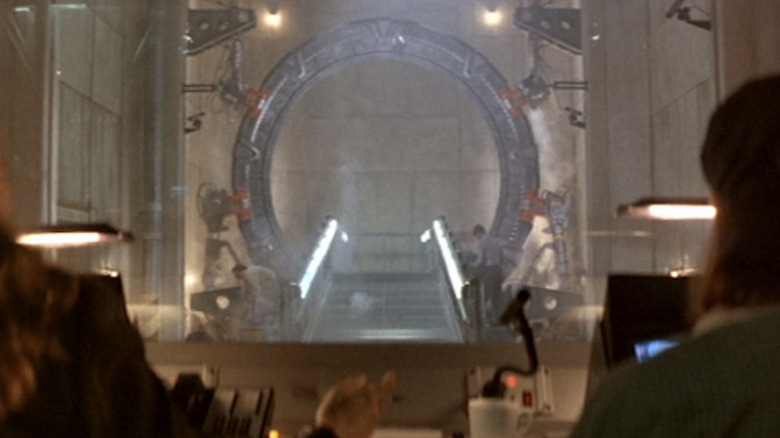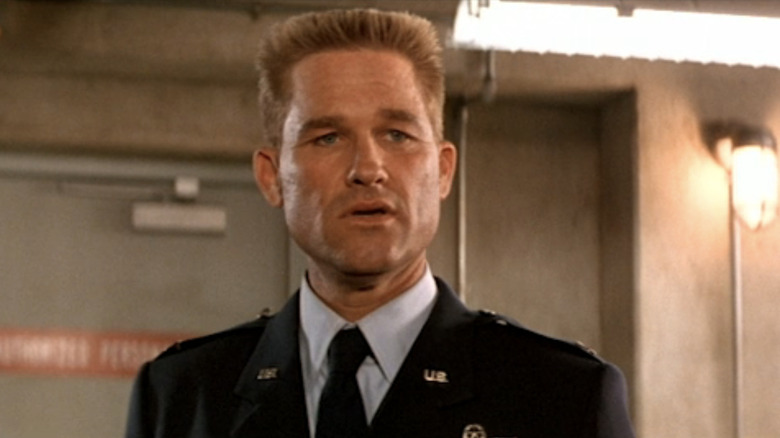Movie Reviews
Movie Review: New Bob Dylan biopic 'A Complete Unknown' is a complete hit – What's Up Newp

“People make up their past, they remember what they want, they forget the rest.”
So says Timothée Chalamet, who plays Bob Dylan in the brilliant new film, A Complete Unknown, in a tense confrontation with Elle Fanning, who plays Sylvie Russo, a character based on Dylan’s on-and-off NYC girlfriend Suze Rotolo, as she prods him to share more about his mysterious past. Of course, he doesn’t, setting the stage for the enduring mystery of perhaps the greatest singer-songwriter of all time, a puzzle that continues to intrigue us.
I was fortunate to attend an advance screening of the movie over the weekend, and I can assure you, the buzz around this film is real. A Complete Unknown deserves all the accolades you’ve been hearing – including three Golden Globe nominations and Oscar talk for Chalamet, as well as for Edward Norton, who plays a perfect Pete Seeger. At the screening, the sold-out Newport audience widely applauded the film as the closing credits rolled; no one yelled “Judas” and no boos were audible.
The film, which should appeal to a wide audience given Chalamet’s youthful charm, opens Christmas Day across the country and begins an extensive run at Newport’s Jane Pickens Theatre on December 26. Advance tickets are available here.
Unlike some other great music biopics (Walk the Line, Bohemian Rhapsody, Coal Miner’s Daughter), A Complete Unknown covers a comparatively brief period in Dylan’s life, from his arrival and rise to fame in New York’s Greenwich Village in 1961, to that divisive moment when he “went electric” at the 1965 Newport Folk Festival, a cultural moment as important as Elvis on Ed Sullivan or The Beatles landing at JFK.
Chalamet is extraordinary playing the well-known singer, but still manages to build out his own character, much like Joachin Phoenix did in his Johnny Cash interpretation in I Walk the Line. And that’s not easy – Dylan is quirky and not easy to mimic. In interviews, Chalamet has said that he had several years to learn Dylan’s mannerisms, mirroring his vocals and acquiring his distinct guitar strumming patterns. He sings all the songs in the film, very close to the original recordings. And it works – Dylan himself recently approved the performance in a widely shared tweet.
Director James Mangold boldly re-creates Greenwich Village in the early 60s, with all the spirited grit and grime of the time, in street scenes and tightly packed basement nightclubs where folk music ruled the day. The story is compelling, the music is authentic, and the acting is outstanding all-around, with love interests Elle Fanning (Sylvie Russo) and Monica Barbaro (Joan Baez) brilliant in their supporting roles.
Mangold doesn’t over-mythologize Dylan, and the film doesn’t shy away from the singer’s darker side, his often rude treatment of those close to him, especially women, and his nasty eye rolls directed toward his mentor, folk legend Pete Seeger. Bob Dylan – always an enigma, kind of a bully, and occasionally “an asshole” as Barbaro, playing Baez, tells him.
Of course, the film plays fast and loose with many facts; Rolling Stone magazine spotted over two dozen places where the film veers from the known historical record, but let’s remember that this a work of historical fiction, not a documentary. It’s closer to the spirit of the truth than anything else I’ve seen about Dylan, including interviews with the bard, who is known for his reticence and occasional deception. The story closely mirrors that period in his life, and the spirit of the narrative is certainly one version of the truth.
Meanwhile, here on Aquidneck Island, where Dylan and his like stormed the Bastille at the 1965 Newport Folk Festival, he’s not so unknown. His spirit is ever present at the Festival, where he appeared from 1963-1965 and again in 2002, sporting a strange wig that still has fans guessing. The “City by the Sea,” along with Greenwich Village, serve almost as co-stars in the film, with frequent Newport references and numerous scenes from the festival grounds and the Viking Hotel. (Note: those scenes were filmed mainly in New Jersey.)
As far as getting to know Dylan’s motivations a little better through the film, that ain’t happening. Chalamet plays him close to the chest, as elusive as ever. When I interviewed longtime Festival producer George Wein in 2015, he told me that Dylan, like Miles Davis in the jazz world, intentionally curated a certain persona, centered around an air of mystery. “Both were always concerned with not doing what you expected of them … throughout their life,” said Wein. “Dylan, his last album, nobody would ever dream he would do an album of Tin Pan Alley ballads.”
The film echoes Wein’s remarks. Dylan was never afraid to take the initiative, from visiting Woody Guthrie in the hospital when he arrived in New York to choosing an electric guitar at Newport in ’65. Sure, he was influenced by the people around him, but he was always his own boss, rarely submitting to the will of others. He did things his way, and continues to do so, like it or not. Perhaps that’s part of the reason he’s such the icon he has become today. Indeed, “If you’re not busy being born, you’re busy dying.”
Click here for more information on A Complete Unknown.

Movie Reviews
Christy

With Christy, David Michôd directs the story of Christy Martin, who single-handedly popularized female boxing from the early 1990s to the 2000s under the nickname coined by huckster-promoter Don King: “The Coal Miner’s Daughter.” Sydney Sweeney plays her in a performance that many critics have hailed as transformative. However, underneath frumpy clothes and an unconvincing wig, Sweeney never disappears into the role—it’s not, say, Linda Hamilton changing her physique to become a badass for Terminator 2: Judgment Day (1991). And as the standard sports movie template descends into a dark account of drugs and domestic abuse, Christy bears a curious similarity to Benny Safdie’s The Smashing Machine, another underwhelming sports biopic this year with a showy performance at the center. Produced in part by Sweeney, the whole production screams Oscar bait in the most cloyingly pedestrian way.
Raised in West Virginia, Christy, a sporto and closeted lesbian, clashes with her conservative, disapproving parents (Merritt Wever, Ethan Embry) who want her to see a priest to “get her straightened out.” Instead, she competes in an amateur boxing match “for fun,” with little knowledge of the sport: “All I knew was that I had to beat the shit outta that bitch before she beat me,” she remarks after her win. Soon, she meets a potential trainer, Jim (Ben Foster), whose creep factor is off the charts. Despite his being decades older and saddled with a beer belly and bad combover, Christy falls for him, ignoring his possessiveness and virulent anti-gay views while buying into his claims that he will make her “the greatest female fighter in the world.” Her mother certainly approves, believing Jim is her ticket to a “normal life.” Meanwhile, the viewer sees all the warning signs and awaits the inevitable fallout.
Michôd and Mirrah Foulkes wrote Christy, and they adhere to a typical sports movie structure, charting Christy’s meteoric rise to fame while ignoring the real boxer’s early-career losses and draws in favor of presenting a seemingly flawless winning streak. Cue the typical training and fight montages, here set to Young MC’s “Bust a Move.” While building a name for her, Jim goes full Vertigo (1958) and tells Christy to cut her hair so it’s not so “butch” and puts her in an all-pink getup so she looks “cute.” Before long, they sleep together, marry, move to Florida (where else?), and present themselves as an ambitious Average American couple. “I’m just a regular wife who happens to knock people out for a living,” Christy claims. She also shuts down any feminist take on her success with the press, pronouncing she doesn’t care about advancing other women or getting more money for them; she only cares about herself and her own success.
Christy’s brainwashing by Jim and her parents grows even more twisted when boxing doesn’t pay the bills, prompting him to arrange seedy hotel room fights for her with a 300-pound man for cash, and later, to record porn tapes with her for the underground market. That’s even after she becomes the first woman to fight on Pay-Per-View—a sequence shot in slow-mo and set to choral music, striking an ill-fitting tone compared to the rest of the movie. Additionally, very few of the boxing matches impress. They’re sloppily choreographed and shot by cinematographer Germain McMicking, who doesn’t bring any distinct visual flair to the proceedings. All the while, Christy is surrounded by people who don’t stand up for her, regardless of witnessing what’s obviously an abusive relationship. Her mother dismisses her claims that Jim has become violent (“You sound crazy,” she tells her daughter, in a maddening scene); she’s more concerned about keeping up appearances. Only Christy’s onetime opponent and later training partner—and later still, wife—Lisa Holewyne (Katy O’Brian) can see Christy’s true self enough to question the pretense.
“You make it real easy for people to dislike you,” Lisa observes. Indeed, she likes to talk smack in front of the press, calling out Lisa as a lesbian while passing as straight. That’s part of what makes her a success: performing for the camera. However, she doesn’t exactly endear herself to the viewer; I struggled to get on Christy’s side, which made the 135-minute runtime feel particularly long, especially in the repetitive second half. Although Jim’s domestic abuse, not only at home but also in the ring while sparring, gives us no choice but to empathize with her. Her only hope seems to be her former high school girlfriend, Rosie (Jess Gabor), who comes in and out of Christy’s life when the story needs her. Soon, drugs enter the mix, and the increasingly paranoid Jim reacts with a brutal attack that brings some finality to their marriage.
Sweeney once again never convinces in her performance, which is becoming a theme in her work, looking at last year’s Immaculate and this year’s Eden. Foster and Wever fare better, but like Sweeney, they’re all wearing equally silly wigs that render their performances unintentionally funny. Similar to The Smashing Machine, which was based on an earlier documentary and sanitized in its dramatization, viewers might be better off watching the documentary on this subject. Released on Netflix, Untold: Deal with the Devil (2021) tells Martin’s complex story without the typical overdone sports movie structure. Michôd, once a promising Australian filmmaker behind Animal Kingdom (2010) and The Rover (2014), appears to have lost his edge in recent years, starting with War Machine (2017) and The King (2019). With Christy, his approach is annoyingly stuffed with big speeches and dialogue that sounds like a Hallmark movie, and its generic, familiar quality never gives way to something worth the hype.
Movie Reviews
Isekai Quartet The Movie: Another World Anime Film Review

When it comes down to it, the main selling point of Isekai Quartet as a whole is watching characters from across entirely different series interact—and often in comical ways. Does this film do this as well as the TV series? The answer is a simple “yes.”
The film begins with our heroes being transported to a post-apocalyptic fantasy world and promptly being attacked. This, in turn, splits them into three main groups. The majority end up with Subaru—though notably without the rest of the titular quartet and Emilia. This allows for lots of humorous interactions between the characters as their leaders are all notably absent. At the same time, Subaru is forced into the role of de facto head of the class and serves as the main point of contact between our heroes and two of the characters already occupying this world, Alec and Pantagruel.
Meanwhile, Ainz and Kazuma (who make a great odd-couple pair) meet up with the final inhabitant of this world, a woman clad in the same style of uniform as Tanya, named Vera. She reveals that she had been isekai’d to this world and is attempting to return to her old world at the head of an army of golems to bring an end to the war. This has brought her into conflict with Alec and Pantagruel, as they wish to stay in this world and are against her returning to her own.
This brings us to the main themes of the film—loneliness and lies. Vera is a woman suffering from extreme betrayal. The Saga of Tanya the Evil world’s equivalent of a first-generation German-American, she suffered greatly once the war in Europe began. She found herself and her family shunned by the community she had grown up in—and vowed revenge on those responsible.
Yet, in this ruined world with Alec and Pantagruel, she found peace and a new family. Subsequently, being betrayed by them—being lied to about not being able to return to her old world—has made her even more distrustful of others and hyper-focused on her original goal.
However, Vera wasn’t the only one alone. Pantagruel spent 400 years on this desolate world as its only conscious inhabitant. With the arrival of Alec and Vera, she finally had someone to talk to—to live life with. Giving that up, even when she knew she should tell Vera what she and Alec had discovered about traveling to other worlds, was too hard for her to do.
Though this web of lies and loneliness puts Pantagruel, Alec, and Vera at the center of the film’s story, that doesn’t mean our heroes from across the Kadokawa multiverse are unrelated to it. The golems that populate the film are related to both the KONOSUBA and Overlord worlds. Likewise, Alec himself has deep ties with the past of the Re:Zero world that set up the problems Subaru and Emilia now face there.
Yet, the deepest connection in the film is that between Tanya and Vera. While Tanya does not know Vera, Vera most certainly knows about the infamous Tanya “White Silver” von Degurechaff. And through her, Tanya is confronted with her own role in starting a world war. But the real meat of their shared story is the question of how much, if at all, Tanya has changed since the start of Isekai Quartet. Is she still the overly rational, empathy-lacking, stickler for the rules she always was in her own anime? Or has she grown to the point where she can sympathize with the plight of a stranger—or, perhaps, even an enemy?
One of the best-selling points of this film is that it actually feels like a movie. Rather than the school setting of the series, we are instead treated to a true fantasy world of ruins, deserts, forests, and golems. Beyond that, the cinematography is greatly improved with surprisingly clever camera work and some legitimately striking moments of visual composition. And then there’s the big extended fight scene at the climax. It’s far beyond anything we’ve seen in the TV anime, and not only does it look good, but it also creatively uses the characters’ powers and backstories from across all the different series to achieve victory.
Isekai Quartet The Movie: Another World is clearly made by a group of people who have an insanely in-depth knowledge of all the series they’re combining. It’s full of fun moments and comedic beats—but also manages to delve into a surprising bit of heartfelt drama. Of course, the insane bar for entry is the weakest aspect of this film, as it’s best if you’ve not only seen all four main anime plus The Rising of The Shield Hero but also the previous two seasons of Isekai Quartet. However, if you’ve seen at least two of the big four anime Isekai Quartet is based on, I think you’ll be surprised at how much you enjoy this film.
Movie Reviews
Roger Ebert Had An Extremely Harsh Review For A Classic Kurt Russell Sci-Fi Movie – SlashFilm

Throughout his illustrious career, Roger Ebert had several surprising takes on unlikely movies. He gave a perfect score to controversial sci-fi film “Prometheus” and bestowed a similarly flawless score on a mediocre Samuel L. Jackson crime thriller. On the other end of the spectrum were the films for which the critic reserved his most acerbic opprobrium. Ebert absolutely hated a forgotten Clint Eastwood gangster movie, which he labelled a travesty. Frankly, that assessment of 1984’s “City Heat” was probably a fair one, but he proved he could be equally as caustic ten years later when he took down Roland Emmerich’s “Stargate” movie.
Written by Emmerich and Dean Devlin, “Stargate” starred Kurt Russell as United States Air Force Colonel Jack O’Neill, who’s placed in charge of mysterious stones uncovered in Egypt bearing hieroglyphics that refer to the titular portal — a device that allows travel between two points in the universe. After Egyptologist Daniel Jackson (James Spader) figures out the meaning behind the markings, he, O’Neill, and a team of explorers pass through the Stargate to the desert planet of Abydos, where they end up trapped after Jackson fails to find the right markings to send them home. Making matters worse, their space excursion has led them to a world ruled over by the despotic Ra (Jaye Davidson), an alien who visited Earth during the time of the Ancient Egyptians, adopted their customs, and enslaved large swathes of their people. The rest of the film sees O’Neill and his crew fighting for their survival and a chance to return back through the Stargate to Earth.
Despite receiving mixed reviews from critics, “Stargate” was a commercial success, grossing $196.6 million worldwide on a budget of $55 million. Unfortunately, Roger Ebert liked the movie about as much as “City Heat.”
Even Kurt Russell didn’t want to star in Stargate at first
When Roland Emmerich signed on to direct “Stargate,” he likely had no idea it would create a sizable media empire. The “Stargate” franchise now comprises multiple TV series, direct-to-home-media movies, comic books, video games, and novels. But in the early ’90s it was just an idea in Emmerich’s head. Inspired by the 1970 documentary “Chariots of the Gods,” which suggested that aliens were responsible for creating civilization, Emmerich joined forces with Dean Devlin to develop the lore of the “Stargate” universe and write his movie. Eventually, the pair secured funding from Canal Plus and set about casting, but it took some time to get Kurt Russell onboard.
Devlin told Variety that the actor actually turned down the movie initially. It seems the “Escape from New York” star wasn’t a fan of the script, which, it was later revealed, was an early version that shouldn’t have been sent out. Once the producers sent Russell an updated screenplay and upped their salary offer, the movie had its Colonel Jack O’Neill (who would eventually be played “MacGyver” star Richard Dean Anderson in the TV series continuation “Stargate SG-1”). As Devlin recalled, “When he actually saw the shooting script he went, ‘Oh, this isn’t so bad.’”
Sadly, Roger Ebert didn’t feel the same. When the movie finally debuted in October 1994, the critic was merciless in his assessment, writing, “The movie ‘Ed Wood,’ about the worst director of all time, was made to prepare us for ‘Stargate.’” What was the critic’s issue with “Stargate?” Well, he has several, and kicked off a long-running feud between he and Emmerich with his review.
Roger Ebert thought Stargate was a series of action movie cliches
“Stargate” was by no means a critical disaster. At the time of writing, it has a 53% rating on Rotten Tomatoes and managed to impress several critics with its special effects. It was, on the whole, seen as a bit of mindless blockbuster fun, but Roger Ebert, wasn’t having any of it.
The critic didn’t let Roland Emmerich get away with anything, pointing out every single plot hole and inconsistency in his takedown of “Stargate.” According to Ebert, this was “the kind of movie where a soldier can be transported to ‘the other side of the known universe’ in a whirlpool of bizarre special effects, step into a temple on an alien planet, and say, ‘What a rush;’” “the kind of movie where the sun god Ra, who has harnessed the ability to traverse the universe at the speed of light, still needs slaves to build his pyramids.” Ebert wasn’t won over by any part of the movie, giving “Stargate” one star and proclaiming it to be “lacking in any sense of wonder” and “like a film school exercise. Assignment: Conceive of the weirdest plot you can think of, and reduce it as quickly as possible to action movie cliches.”
“Stargate” was the beginning of Emmerich and Dean Devlin’s working relationship, with the pair going on to collaborate on 1996’s “Independence Day,” 1998’s “Godzilla,” 2000’s “The Patriot” and 2015’s “Independence Day: Resurgence.” But “Stargate” also marked the beginning of an infamous feud between Ebert and Emmerich, with the former criticizing “Independence Day” leading Emmerich to take a swing at the critic by including a Mayor Ebert parody character in “Godzilla.” Ebert and fellow critic Gene Siskel then summarily trashed the film.
-

 Milwaukee, WI6 days ago
Milwaukee, WI6 days agoLongtime anchor Shannon Sims is leaving Milwaukee’s WTMJ-TV (Channel 4)
-

 News6 days ago
News6 days agoWith food stamps set to dry up Nov. 1, SNAP recipients say they fear what’s next
-

 Alabama1 week ago
Alabama1 week agoHow did former Alabama basketball star Mark Sears do in NBA debut with Milwaukee Bucks?
-

 News1 week ago
News1 week ago1 dead, 6 injured in shooting at Lincoln University homecoming festivities
-

 Austin, TX1 week ago
Austin, TX1 week agoDia De Los Muertos Austin: Parades, Altars & Events
-

 Politics1 week ago
Politics1 week agoTrump to jet off to Asia as North Korea fires ballistic missiles and China trade questions loom
-

 Seattle, WA6 days ago
Seattle, WA6 days agoFOX 13’s Aaron Levine wins back-to-back Jeopardy! episodes
-

 Culture5 days ago
Culture5 days agoVideo: Dissecting Three Stephen King Adaptations






















